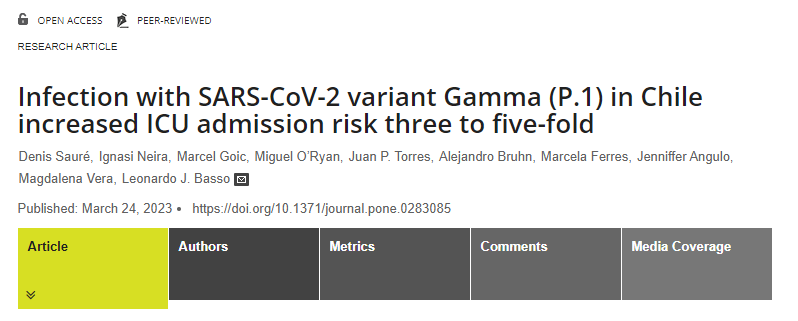Denis Sauré, Ignasi Neira, Marcel Goic, Miguel O’Ryan, Juan P. Torres, Alejandro Bruhn, Marcela Ferres, Jenniffer Angulo, Magdalena Vera, Leonardo J. Basso
Abstract
The 2021 wave of SARS-CoV-2 infection in Chile was characterized by an explosive increase in ICU admissions, which disproportionately affected individuals younger than 60 years. This second wave was also accompanied by an explosive increase in Gamma (P.1) variant detections and the massive vaccine rollout. We unveil the role the Gamma variant played in stressing the use of critical care, by developing and calibrating a queueing model that uses data on new onset cases and actual ICU occupancy, symptom’s onset to ICU admission interval, ICU length-of-stay, genomic surveillance, and vaccine effectiveness. Our model shows that infection with the Gamma (P.1) variant led to a 3.5–4.7-fold increase in ICU admission for people younger than 60 years. This situation occurred on top of the already reported higher infection rate of the Gamma variant. Importantly, our results also strongly suggest that the vaccines used in Chile (inactivated mostly, but also an mRNA), were able to curb Gamma variant ICU admission over infections.
